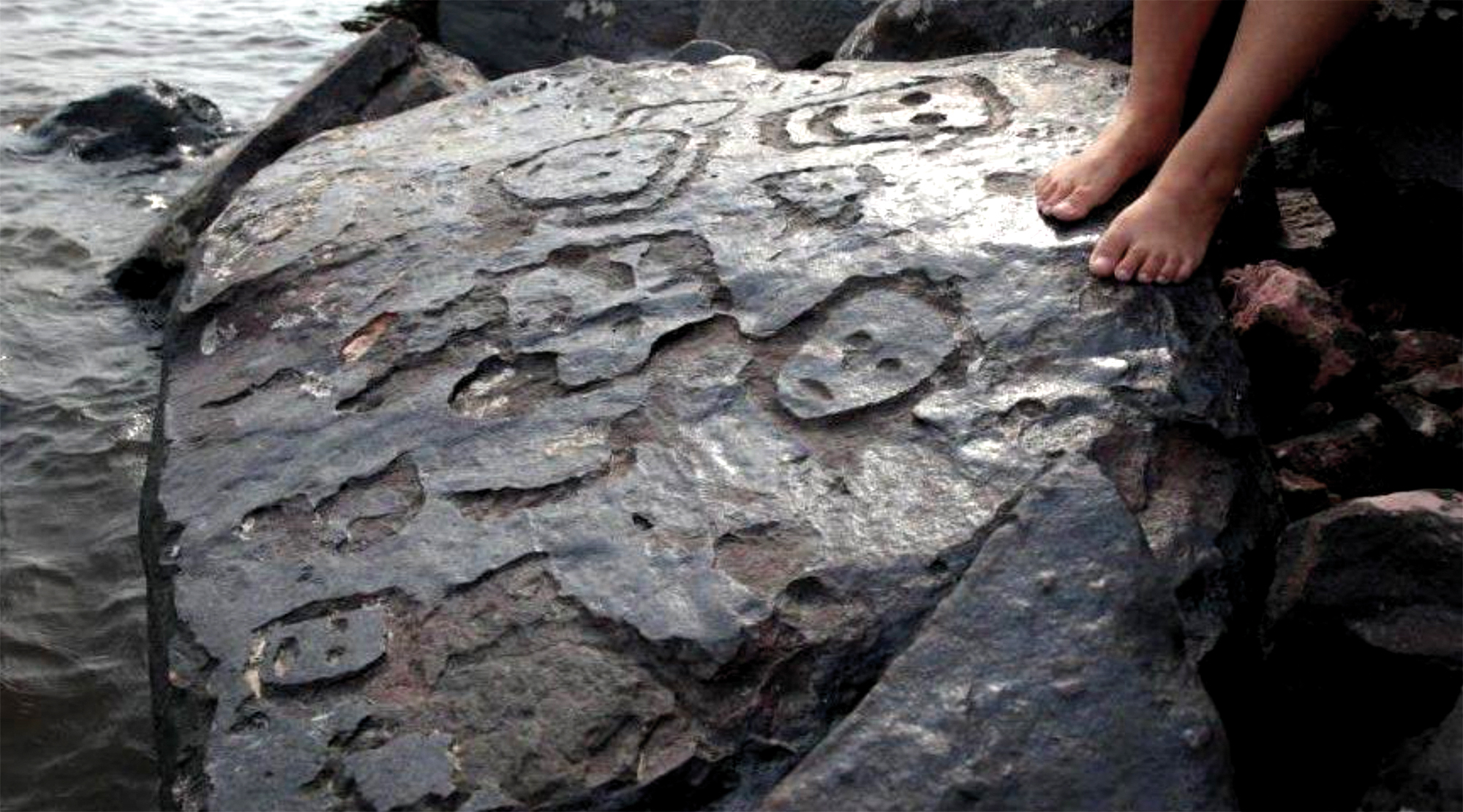

Ponta das Lajes (Brazil), 2,000 years ago. The men who lived in the heart of the Amazon sculpted themselves in the rocks, representing human faces.
The Brazilian Amazon is suffering the worst drought in the last 121 years. The drought is causing great damage to the environment and its inhabitants; thousands of people who depend on river transport to move around and get food have been incommunicado. But the water shortage and the decline in the river level have brought unforeseen news to archaeologists: four previously unknown deposits have been discovered. Anthropomorphic images appear recorded on the rocks Ponta das Lajes, Urucaran and São Sebastião de Uatumãn, where the funeral urns of Anamãn are located. The four deposits are located within 300 kilometres of Manaus.
It has long been thought that in the Amazon there have been very few human beings, a “place without history”
For the archaeologist Jaime Oliveira, in charge of the study of the discoveries, the finding of so many vestiges in such a small area indicates that in the heart of the jungle the population was very dense. “Due to the characteristics of the environment, caves or monumental deposits are not frequently found here. We don’t have that location, but that doesn’t mean there isn’t a complex social organization that knew the environment well.”
It has long been thought that in the Amazon there have been very few human beings, “a place without history”, according to Oliveira. But the current idea of the green desert is discarded and experts say that 9 to 10 million people lived in this rainforest before the arrival of the colonizers. As elsewhere on the continent, around 90% of the population died at the end of the sixteenth century and in the seventeenth century, due to clashes with Europeans and, above all, to the diseases caused by them.
In the Amazon there were not large metropolises, as in the Inca or Aztec territories, but large concentrations of villages. In the jungle there are few stones for construction and the buildings were built with organic material. This hinders the work of archaeologists and increases the risk of misinterpretations. Now, unfortunately, what makes life difficult for the current population is what has facilitated the work of archaeologists.